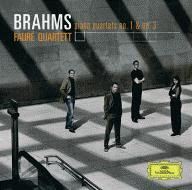Performance Review: Dorian Gray
Last Saturday we had the good fortune to attend the matinee performance of New Adventure's (Matthew Bourne's) Dorian Gray which premiered at this year's Edinburgh International Festival. I should preface this with the note that I am a Matthew Bourne fan. I have enjoyed his Car Man, Nutcracker!, and Edward Scissorhands immensely, and my family also has seen Play Without Words, which they say was fabulous. I am also a huge fan of Oscar Wilde - The Portrait of Dorian Gray is one of my all time favorite works so, naturally, I had high expectations of this production. For the most part it lived up to them.
Matthew Bourne has achieved exactly the approach that we are often rabbiting on about here at Interchanging Idioms - the work is fresh, alive and contemporary. Although there is much to be enjoyed by dance aficionados, even a young person who had never been to the theatre would have found something to relate to in this production. I can see in the future that people might be saying Dorian Gray brought a fresh young audience to dance.
Bourne achieves this in three main areas - the set/costume design, the dance styles and expressions, and the music. The set is structured around an ingenious turntable that allows for remarkably fast scene changes and some interesting choreographic 'reveals'. You often watch a character exit the centre doors only to have the turntable rotate so that you can watch them enter the party. The effect becomes very cinematic at points - the turning set effects the eyes in the same way a dissolve does on film. The colour scheme of set and costumes is very chromatic - most characters are in black and/or white, Dorian (naturally) in gray. The curtain is open throughout, and when I first saw the set I thought we might be in for a very bleak evening, or at the least that the design might mimic that in Nutcracker!, (monotone at the beginning, bursting into colour for the fantasy sequences). Instead, Set Costume Designer Lez Brotherston (a long time Matthew Bourne collaborator) delivers a black and white photograph brought to life with all the depth and clarity of film. The final visual element is added with projections of fashion photographs against the back wall. The stunning set piece 'Basil Shoots Dorian' ingeniously uses the camera shutter sound and flashing pictures of the exact pose happening in the dance - we are at war with ourselves, wishing to watch the dancers in the flesh but our eyes are irresistibly drawn to the larger-than life portraits that are flashing up. This scene is the perfect embodiment of the conflict of celebrity - which is more interesting, the person, or the image we have of that person? This is powerful stuff, and 4 days later I am still pondering it!The dance moves Matthew Bourne uses have always drawn liberally from non-balletic forms and in this Dorian is no different. The dancers used elements of Hip Hop and Urban freely mixed with modern, jazz and traditional ballet. More so than in any production to date the individual dancers had an opportunity to shine - this is partly due to the modern story, but also due to very individual approach the dancers have taken to their characters. Of particular note was Richard Winsor as Dorian and Aaron Sillis as Basil who danced stunning pas de deux and convinced us all over again of the strength and beauty of the male form. It is also a credit to the passion in these two men, that the 'love' scenes were never awkward or contrived, but happened naturally and with a large measure of chemistry.
The music was unfortunately the weak part of the entire production. Overall it was serviceable, at times it was strong, but there were only one or two 'incredible' moments, and in a production the was filled with those moments in the dance and design the lack of incredible music was noticed. In the first act the music was very uneven. The funky beats of Basil's World played very well, but there was a sense of uncertainty moving into the next scene. Basil Shoots Dorian was propelled by the shutter clicks, but a clunky change of music (to coincide with the stage business of Basil changing a CD in his studio) seemed ill-timed and the heavy metal sound of the second theme had the effect of dissolving the tension that had been built through the scene. The music of the second act was stronger and more cohesive and beginning with Celebrity the themes dovetailed into each other building on our sense of impending doom as Dorian cycled out of control. The only false note here was in On the Prowl as the music returned to the off-footed discomfort of the first act. The musicians were of excellent quality and the music was well played and mixed.
All in all, this was an excellent production that I believe will become a classic. Matthew Bourne was quoted in the programme as saying '
We are in a society in which people are obsessed by youth and maintaining the appearance of youth for as long as possible. Dorian's wish to stay young for ever seems to be the dream of many people today... there is a point though, when this obsession can turn grotesque and unnatural.'By mining that seam of the grotesque, Matthew Bourne has created a Dorian Gray that is a beautiful dream.

Comments